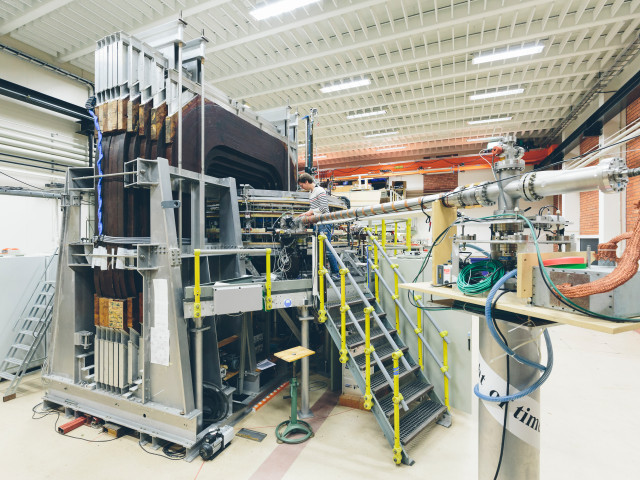Observational techniques and instruments, radiation transport, celestial mechanics, star formation and evolution and large-scale structure of the universe, exoplanets.
SH2404 Astrophysics 7.5 credits

Information per course offering
Information for Spring 2026 Start 16 Mar 2026 programme students
- Course location
AlbaNova
- Duration
- 16 Mar 2026 - 1 Jun 2026
- Periods
Spring 2026: P4 (7.5 hp)
- Pace of study
50%
- Application code
61094
- Form of study
Normal Daytime
- Language of instruction
English
- Course memo
- Course memo is not published
- Number of places
Places are not limited
- Target group
- No information inserted
- Planned modular schedule
- [object Object]
- Schedule
- Schedule is not published
- Part of programme
- No information inserted
Contact
Course syllabus as PDF
Please note: all information from the Course syllabus is available on this page in an accessible format.
Course syllabus SH2404 (Spring 2026–)Headings with content from the Course syllabus SH2404 (Spring 2026–) are denoted with an asterisk ( )
Content and learning outcomes
Course contents
Intended learning outcomes
After passing the course, the student must be able to:
- Plan and carry out simple observations as well as evaluate the results and suggest improvements.
- Describe different observation techniques and instruments and evaluate their advantages and disadvantages. Explain how astronomical observations and measurements are carried out.
- Describe the physical processes of how radiation is transported through matter and in the universe. Explain how absorption and emission lines arise and how they can be used in analysis.
- Explain and apply the theory of celestial mechanics, i.a. explain Kepler's laws.
- Based on physical reasoning, explain the main stages in the development and structure of different star types.
- Account for observations of the large-scale structure of the universe and reflect on theories for structure formation in the universe on both large and small scales.
- Explain various aspects of the study of exoplanets.
Literature and preparations
Specific prerequisites
English B/English 6
Completed course in Classical Physics (SK1104, SK1108, MJ1530 or equivalent).
Literature
You can find information about course literature either in the course memo for the course offering or in the course room in Canvas.
Examination and completion
Grading scale
A, B, C, D, E, FX, F
Examination
- OBS1 - Observations, 1.5 credits, grading scale: P, F
- SEM1 - Seminar, 1.0 credits, grading scale: P, F
- TEN1 - Examination, 5.0 credits, grading scale: A, B, C, D, E, FX, F
Based on recommendation from KTH’s coordinator for disabilities, the examiner will decide how to adapt an examination for students with documented disability.
The examiner may apply another examination format when re-examining individual students.
If the course is discontinued, students may request to be examined during the following two academic years.
Examiner
No information inserted
Ethical approach
- All members of a group are responsible for the group's work.
- In any assessment, every student shall honestly disclose any help received and sources used.
- In an oral assessment, every student shall be able to present and answer questions about the entire assignment and solution.
Further information
Course room in Canvas
Registered students find further information about the implementation of the course in the course room in Canvas. A link to the course room can be found under the tab Studies in the Personal menu at the start of the course.
Offered by
Main field of study
Engineering Physics
Education cycle
Second cycle